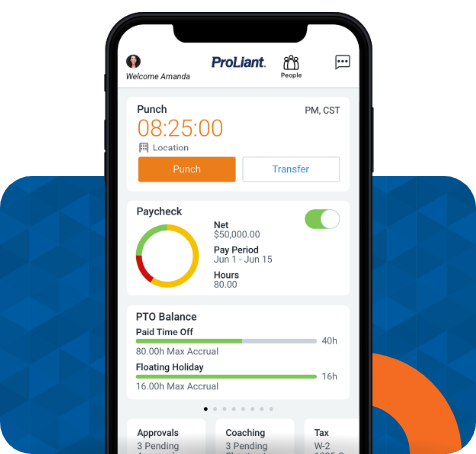Open Enrollment season poses many new challenges, but maybe the biggest challenge faced by HR professionals this year is addressing employee wellness and the mental health crisis in America. Since the onset of the pandemic, many employers have adjusted to provide better mental health and well-being benefits for employees. However, many others still fall behind when it comes to offering benefits to employees that need them now more than ever.
According to a survey from SHRM, there has been “an increase in supplemental benefits enrollment” due to fear resulting from the pandemic as more people are concerned with protecting themselves and their loved ones from illness. Additionally, benefits that include coverage for mental health and employee wellness programs are now essential drivers for attracting and retaining employees.
The Mental Health Crisis in America
Mental health disorders are among the most burdensome health concerns in the United States.
1 in 5 US adults aged 18 or older experience mental illness.
71% of adults experience at least one symptom of stress, such as a headache or feeling overwhelmed or anxious.
Poor mental health and stress can negatively affect employees in a wide variety of ways, including job performance, productivity, engagement in their work, communication with fellow teammates and management, and daily functioning.
Fisher Phillips, a national labor and employment firm, conducted an extensive survey and found that employers have experienced “troubling workplace developments” in the past two years that they believe have been caused by mental health concerns:
- 51% say they have fielded reports of burnout or mental fatigue
- 46% say they have faced higher levels of turnover
- 34% say they have seen increased absenteeism
Why should organizations offer mental health resources and benefits?
Improve the health of employees
According to a recent SHRM survey, “94 percent of HR professionals believe that by offering mental health resources, organizations can improve the overall health of employees.” In addition, the study revealed that 78 percent of organizations currently offer workplace mental health resources or plan to offer such resources in the next year.
Boost recruitment and retention
Offering these resources will also be crucial in recruitment moving into 2023. In the SHRM survey, “86 percent of HR professionals indicate that offering mental health resources can increase employee retention, and 72 percent believe such resources attract new talent.”
Increase productivity
Some primary concerns holding companies back from addressing mental health are that many don’t have the resources or “believe it’s too expensive to act.” However, according to the CDC, by combining medical and behavioral health care services, the United States could save $37.6 billion to $67.8 billion a year. And most experts believe that providing mental health and wellness benefits will have a massive return on investment as they prevent negative impacts on employee performance and increase productivity overall.
What are insurance companies doing to address the mental health crisis?
There is a great need for individual coverage for mental health services. According to the American Psychological Association (APA), 84% of psychologists have seen an increase in demand for anxiety treatment since the start of the pandemic, and the demand for “treatment of depression is also up, with 72% of psychologists who treat depressive disorders saying they have seen an increase.”
Key findings of the 2022 AHIP Mental Health Survey show how health plans have improved access to mental health services in reaction to rising demand with more in-network providers and tools to help patients find appointments. This 14-question survey was distributed to AHIP members offering commercial major medical coverage, and responses were received in May and June 2022.
Here are the key findings from the survey that show how insurance companies are reacting to the demand for mental health coverage:
- 48% increase of in-network behavioral health providers in 3 years among commercial health plans.
- 100% of plans provide coverage for telehealth behavioral health services.
- 89% of health plans are actively recruiting mental health care providers.
- 78% have increased payments to providers in efforts to recruit more high-quality professionals to their plan networks.
- 114% increase over three years in the number of providers eligible to prescribe Medication Assisted Therapy (MAT) for substance use disorder, including opioid dependence.
- 72% of plans are training and supporting PCPs to care for patients with mild/moderate behavioral health conditions.
- 83% of plans report they assist enrollees with finding available behavioral health appointments.
- 78% use specialized case managers for follow-up after emergency room and inpatient care and/or starting new medications.
FAQ: “Does my insurance cover mental health or counseling?”
Employers and HR teams should make sure that employees know how to find information about what is covered by their insurance by providing instructions on where they can find coverage details in their plans.
- How do you know if your health insurance plan offers mental health coverage? Check your description of plan benefits for information on behavioral health services or coverage for mental health and substance abuse disorders. You may also ask your human resources representative or contact your insurance company directly.
Telehealth for Mental Health Services
Virtual health services, like teledoc, for mental health is on the rise. According to the APA, many psychologists switched to telehealth during the pandemic, and 96% of all clinical psychologists continue to provide some services remotely. As a result, the “APA continues to advocate for continued flexibility in insurance coverage of telehealth services, including audio-only telehealth, as well as equal coverage and reimbursement for telehealth services in comparison with in-person treatment.”
Telehealth is a vital service that enables patients from underserved communities to access essential care. And telehealth is here to stay, “96% of psychologists said that the use of telehealth during the pandemic has proven its effectiveness as a therapeutic tool, and 93% said that they intend to continue providing telehealth as an option in their practice after the pandemic.”
The Mental Health Parity Law
In 2008 the mental health parity law was passed, requiring insurance companies that cover services for mental health to treat mental and behavioral health and substance use disorder coverage the same as medical and surgical coverage. This law affects copay charges and prevents insurance companies from limiting the number of mental health visits allowed in a year. Here are a few more things to know about the mental health parity law:
- This law affects employer-sponsored health coverage for companies with 50 or more employees and coverage purchased through health insurance exchanges, CHIP, and most Medicaid programs.
- The law does not require insurers to provide mental health benefits. However, most large group plans already provided mental health benefits before the law took effect.
- If an insurance company limits or terminates care sooner than your doctor thinks is appropriate, that could indicate a possible parity law violation and should be reported.
Recently, the U.S. Departments of Labor, Health and Human Services, and Treasury issued the Mental Health Parity and Addiction Equity Act Report to Congress. This report found that “health plans and insurance companies are falling short of providing parity in mental health and substance use disorder benefits, at a time when those benefits are needed like never before.” Even though the parity laws make it so insurers can’t impose different and higher deductibles, many people still struggle to afford the cost of care. Additionally, insurers still have a lot of control over individual care, determining whether treatments are “medically necessary.”
What actions can employers take to address mental health in the workplace?
There is a lot of information to parse through when discussing mental health in the workplace, so it can be challenging to know where to get started. Luckily, organizations like the APA and CDC have compiled various resources on their websites to help.
Here are nine action steps from the CDC employers can take to address mental health in the workplace:
- Provide mental health self-assessment tools to all employees.
- Offer clinical screenings for depression from a qualified mental health professional, followed by directed feedback and clinical referral when appropriate.
- Offer health insurance with no or low out-of-pocket costs for depression medications and mental health counseling.
- Provide free or subsidized lifestyle coaching, counseling, or self-management programs.
- Distribute materials, such as brochures, flyers, and videos, to all employees about the signs and symptoms of poor mental health and opportunities for treatment.
- Host seminars or workshops that address depression and stress management techniques, like mindfulness, breathing exercises, and meditation, to help employees reduce anxiety and stress and improve focus and motivation.
- Create and maintain dedicated, quiet spaces for relaxation activities.
- Provide managers with training to help them recognize the signs and symptoms of stress and depression in team members and encourage them to seek help from qualified mental health professionals.
- Give employees opportunities to participate in decisions about issues that affect job stress.
Employers can also take action to implement wellness programs, update benefit offerings, promote wellness communication, and offer reasonable accommodations.
Employee Wellness Programs
One of the best things employers can do to address the mental health crisis in America is to build an employee wellness program that is unique to their organization. Employee wellness programs (also called workplace wellness programs) help employers offer support for employees to maintain healthy lifestyles.
Workplace wellness programs help identify those at risk for mental health and other concerns and connect them to treatment. These programs also assist organizations with building support systems to help people reduce and manage stress, anxiety, and depression that can stem from certain work environments.
How can employers help destigmatize mental health?
Even though insurance companies are improving coverage and employers are offering more benefits to address the mental health crisis, the stigma around mental health needs to be addressed before any mental wellness program can be effective.
Encouraging team communication is the best way to destigmatize mental health. Employees and employers can “share personal experiences with others to help reduce stigma, when appropriate. Be open-minded about the experiences and feelings of colleagues. Respond with empathy, offer peer support, and encourage others to seek help. Adopt behaviors that promote stress management and mental health.”
Get to Know the ProLiant Benefits Administration Solution for a Streamlined Open Enrollment Process
Whatever your benefit offerings will look like for 2023, ProLiant is here to streamline your processes with our benefit administration solution, ensuring your employees stay confident and well-informed while making their benefit enrollment decisions. With ProLiant, you can securely send enrollment data to multiple insurance carriers, eliminate risks associated with regulatory mandates, and view benefit overviews side-by-side to help employees pick the plan that’s best for them.
If you have questions about providers offering mental health coverage for employees or ProLiant’s benefits administration solution, contact us today to request a meeting with one of our benefits administration experts.







No Comments Yet
Let us know what you think